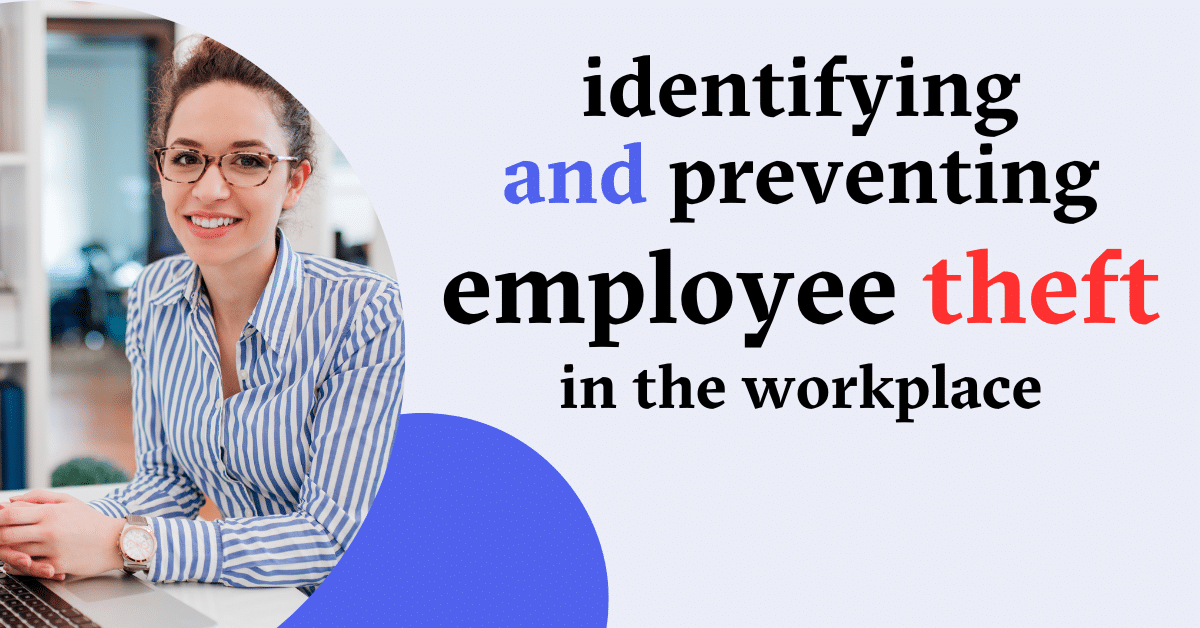Identifying and Preventing Employee Theft in the Workplace
August 7, 2024
Workplace theft appears in various forms and is challenging to prevent, but employers can mitigate it through proactive measures, lawful surveillance, and prompt investigations.
This theft can range from minor pilfering of office supplies to creating fraudulent business transactions amounting to millions of dollars in losses. Employees sometimes steal physical items, but theft of electronic information can be even harder to detect and stop.
Employees often take valuable data, including competitive information and personal information. Examples of competitive information might be customer contact lists. Personal data, such as Social Security numbers, health insurance details, and financial account numbers, can be exploited for identity theft or sold on the black market for significant sums.
In some instances, employees use stolen information to embarrass colleagues or customers. Health information about co-workers has been maliciously posted on social media to humiliate them.
Complex scenarios involve the misuse of personal information, such as protected health information or employee safety records, to bolster whistleblower complaints against a company. It is crucial to remember that while employees may report safety and legal violations, there is a concurrent obligation to protect personal information and prevent unauthorized disclosures.
Preventative Measures
Implementing an effective compliance and ethics program is essential in combating workplace theft. This strategy clarifies company expectations about ethical conduct.
Auditing programs help identify potential issues and guide improvements in internal controls.
Data analytics is a powerful tool for spotting irregularities, particularly useful in managing large volumes of information. It can help identify “ghost employees,” or fictitious workers who receive paychecks funneled into fraudsters’ accounts. Data analytics programs can cross-check bank account information to quickly highlight duplicate accounts shared by supposed different employees, thereby exposing possible fraud.
Other proactive strategies include:
- Requiring employees to sign confidentiality agreements that prevent retaining confidential information for unauthorized usage or post-employment use.
- Logging and monitoring access to databases containing valuable information via unique login credentials to track who accesses the data and when.
- Logging and monitoring the download, transmission, and printing of sensitive information.
- Blocking the use of portable memory devices like flash drives on company systems.
- Implementing data-loss prevention software.
- Restricting access to valuable information on a need-to-know basis.
Monitoring Strategies
Surveillance plays a significant role in preventing theft. Knowing they are being watched reduces the likelihood of employees engaging in theft.
In facilities where theft has occurred, video surveillance in common areas can be an effective deterrent. However, it’s important to respect employees’ privacy expectations.
Surveillance without notice, and in some cases without consent, can infringe on reasonable privacy expectations. Consent should be obtained before conducting audio surveillance or intercepting messages. Video surveillance should not be conducted in highly private areas like bathrooms, changing rooms, or locker rooms, as this can violate privacy and damage morale.
Investigative Protocols
Upon catching an alleged thief, even if termination is expected, immediate termination during the initial interview about the incident is not recommended. Suspension pending the investigation’s completion is a better approach.
During the investigation, interview witnesses before the accused. At the start of such investigations, it is essential to inform the accused employee about the mandatory nature of their participation and that non-cooperation may result in termination.
The investigation should involve at least two people, preferably with no personal connection to the accused. Witnesses should provide handwritten statements, and the investigation record must include accounts from the accused employee. If an employee admits to theft, a written confession is ideal, but it doesn’t replace the need for a thorough investigative file.
If evidence is inconclusive, avoid labeling the reason for discipline or termination as “theft” or “dishonesty,” as this may necessitate proving the crime in court. Instead, focus on trust issues in the employee.
Enlisting Law Enforcement
Reporting theft to authorities is discretionary but often advisable. Loss covered by insurance may require a police report to file a claim. Law enforcement involvement can aid in recovering lost property or funds and often includes restitution as part of criminal court plea arrangements. Reporting crimes to law enforcement can serve as a strong deterrent to future thefts.
share this blog
STAY CONNECTED
Sign up for our newsletter for the latest Tesseon information.
Related Blogs
What our clients are saying about us
Disclaimer: The information provided on this blog page is for general informational purposes only and should not be considered as legal advice. It is advisable to seek professional legal counsel before taking any action based on the content of this page. We do not guarantee the accuracy or completeness of the information provided, and we will not be liable for any losses or damages arising from its use. Any reliance on the information provided is solely at your own risk. Consult a qualified attorney for personalized legal advice.

